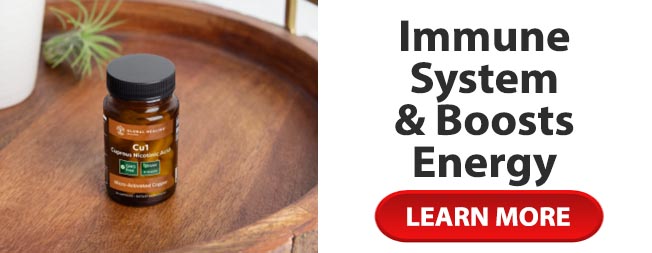Sunburn
Causes
Symptoms
Home Care
Prevention
Sunburn
Sunburn results from over exposure to sun or ultraviolet radiation. Almost everyone has been sunburned or will become sunburned at some time. It happens to a living tissue like skin causing reddish skin.
Anyone who visits a beach, goes fishing, works in the yard, or simply spend too much time in the sun can get sunburn. Although seldom fatal (sun poisoning), sunburn can be disabling and result in quite a bit of uneasiness.
Causes
Sunburn occurs due to UV radiation, either from the sun or from artificial sources, such as welding arcs, the lamps used in sun beds, and ultraviolet germicidal irradiation. The result of this burn is inflammation of the skin. It is a reaction of the body to the direct DNA damage which can occur due to the excitation of DNA by UV-B light. Injury can take place within 30 minutes of exposure.
UVA and UVB denote difference in wavelengths in the light spectrum. UVB is more fatal to the skin especially for skin cancer. Both UVA and UVB cause photoaging that is premature aging of the skin and wrinkles and sunburn.
Travel to the southern United States, regions close to the equator, and places at high altitudes cause injury by sunburn.
Certain light-skinned and fair-haired people are more likely to get sunburn injury.
Skin cancer usually appears in adulthood, but is caused by too much sun exposure and sunburns that began as early as childhood. If you want to prevent skin cancer protect your skin and your children\’s skin from the harmful UV rays of the sun.
Factors that make sunburn more likely:
Infants and children are more likely to get sunburns.
Fair skin is more prone to sunburn. But even dark and black skin can be affected and should be protected from sun.
The sun\’s rays generally remain strongest during the hours of 10:00 a.m. to 4:00 p.m. The sun\’s rays are also powerful at higher altitudes and lower latitudes, closer to the tropics. Reflection of water, sand, or snow can strengthen the sun\’s harmful burning rays.
Sun lamps can result in severe sunburn.
Some medications (such as the antibiotic doxycycline) can make you more sensitive to sunburn.
Symptoms
The first signs of sunburn may not be seen for a few hours. The full effect to your skin may not emerge out for 24 hours or longer. Possible symptoms are as follows:
- Red, tender skin that is warm to touch
- Blisters can develop hours to days later
- Severe reactions (sometimes called \”sun poisoning\”), including fever, chills, nausea, or rash.
- Skin peeling on sunburned areas several days after the sunburn
While the symptoms of sunburn are usually temporary (such as red skin felt painful to the touch), the skin damage is often permanent and can cause serious long-lasting health effects, including skin cancer. By the time the damage become painful and red, the damage has been completed. The pain is nastiest between 6 and 48 hours after sun exposure.
Skin loss – About 4-7 days after exposure
In case of severe sunburns, blistering of the skin may take place. Deaths have also occurred due to acute sun exposure, and significant transitory disability is also experienced by millions of sunburned people each year.
Conditions that should motivate you to go to a hospital\’s emergency department include the following:
- Severe pain
- Severe blistering Headache
- Confusion
- Nausea or vomiting
- Fainting
- An acute problem with another medical condition
Home Care
It is better to prevent the sunburn than waiting for a cure. Effective sunscreens are now available in a wide range of strengths. Most doctors recommend a sunscreen SPF level of 30 or greater for better protection.
Sunscreen should be applied generously. If you wish to out in the sun for a long time during the day, wearing a hat and other protective clothing is highly recommended. Also remember that light clothing reflects the sun in the most effective way.
If you do get sun burnt:
Try to have a cool shower or bath or placing wet, cold wash rags on the site of the burn.
Avoid products containing benzocaine, lidocaine, or petroleum (like Vaseline).And also try to avoid bath salts, oils, and perfumes because these may cause sensitivity reactions.
Avoid scrubbing or shaving the skin. Use soft towels to dry yourself gently. You can also use a light, fragrance-free skin moisturizer.
If blisters occur, dry bandages may help prevent infection
If your skin is not blistering, you can use moisturizing cream in order to relieve discomfort
Over the counter medications, such as ibuprofen, may alleviate pain from sunburn. But avoid giving aspirin to children.
Apply Aloe- based lotion on affected area.
Oral medication
Sunburns can cause a headache or mild fever along with pain, therefore an analgesic may be indicated. Acetaminophen can help alleviate the pain. Taking NSAIDs such as ibuprofen or naproxen may help to decrease pain and inflammation. Aspirin may also be used with caution. It is advised not to give aspirin to children as it may result in Reye\’s syndrome.
Prevention
- Avoid sun exposure during hours of intense sun ray
- Wearing wide-brimmed hats, long-sleeved shirts, and long pants are rational enough
- Apply sufficient sunscreen with a sun protection factor (SPF) of at least 30. Pay special consideration to your face, nose, ears, and shoulders. Remember, the higher the SPF, the greater the protection.
- Apply sunscreen 30 minutes prior to sun exposure to allow penetration
- Re-apply sunscreen after swimming and every 2 hours while you are outdoors
- Wear sun hats to protect your face. SPF clothing and swimwear are also available.
- Wear sunglasses with UV protection
- Use a lip balm with sunscreen while going out
- Drink extra fluids for the next 2-3 days



Hi, the whole thing is going sound here and ofcourse every one is sharing information, that’s in fact excellent, keep up writing.